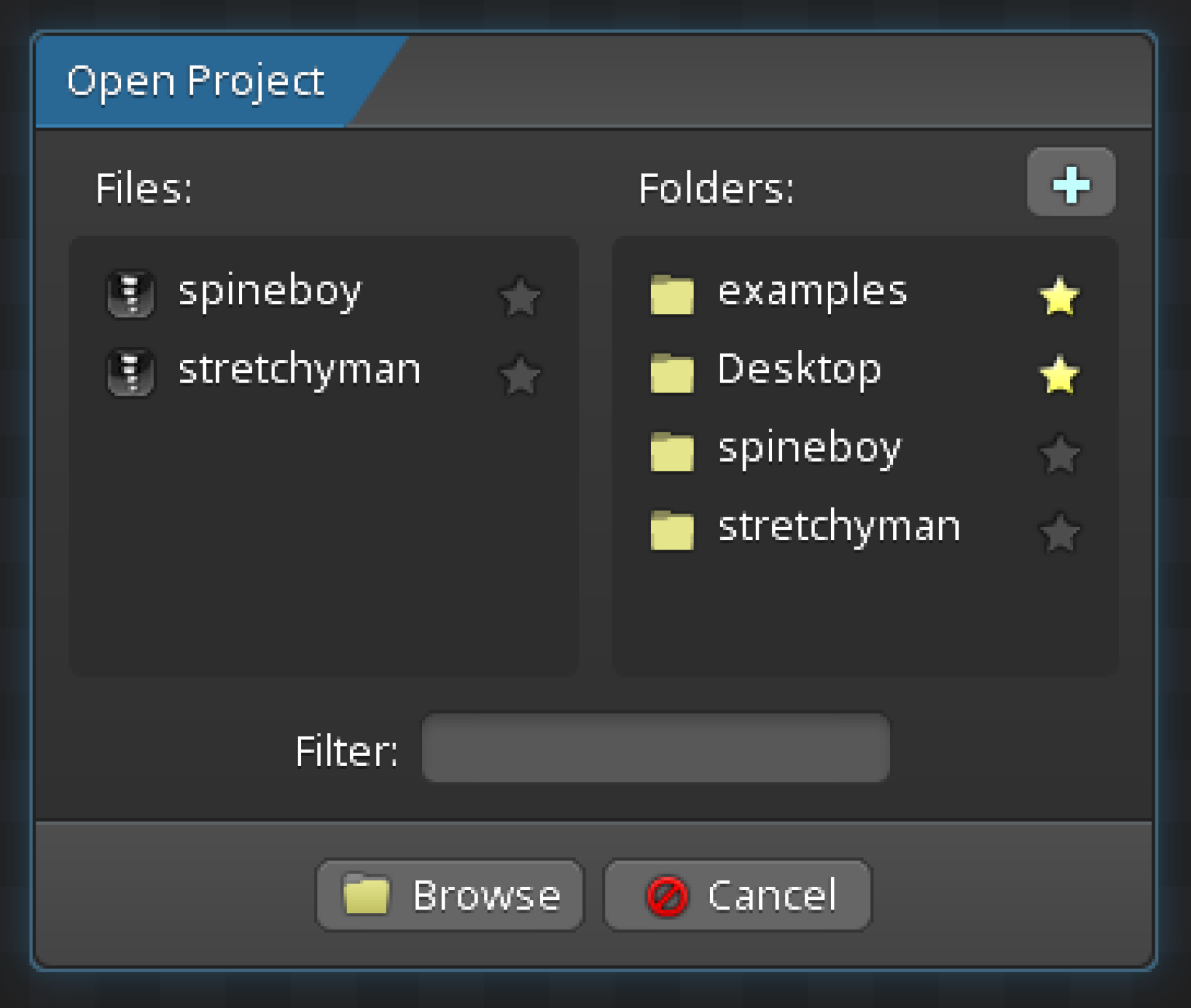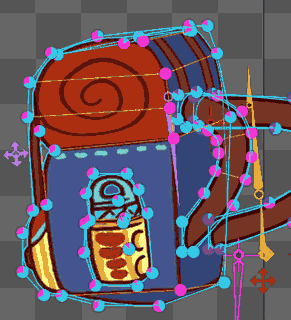
The amount of rotation and scale used is not stored in deform keys. Rotation and scale are only used to move the vertices. Deform keys should generally be avoided and weights used instead.

Moving vertices in animate mode is done to set deform keys. Moving vertices in setup mode changes the clipping attachment for the setup pose. The origin will automatically snap to vertices. Mouse over the small crosshair at the center of the Rotate or Scale tool until a circle appears, then drag the origin to the desired position. The origin used for rotation or scaling can be changed. The selected vertices can be deselected by pressing spacebar or escape, or by clicking in any empty space. Multiple vertices can be selected by holding ctrl ( cmd on Mac), then clicking or dragging to box select. Individual vertices can be translated with any transform tool by dragging. The entire clipping attachment can be rotated, translated, and scaled like any other attachment. To complete the vertices, exit the new vertices mode by clicking the first vertex to close the polygon or by clicking the New button again.Ĭlipping attachment vertices can be moved outside of edit mode by using the transform tools. Vertices can also be translated by dragging or deleted by double clicking. This mode allows the clipping attachment to be defined by clicking to create new vertices. The New button deletes all vertices and enters the new vertices mode.

Multiple vertices can be selected by holding ctrl ( cmd on Mac) or dragging to box select. The Delete tool allows vertices to be deleted by clicking. The Create tool allows new vertices to be created along the clipping attachment edges by clicking. Right click switches between the Create and Delete tools. It can be exited at any time by clicking the Edit Clipping button again, by closing the edit mode dialog, or by pressing spacebar or escape. The Edit Clipping button enters edit mode. Edit modeĮdit mode allows for creating, modifying, and deleting the clipping attachment's vertices. The translation values shown are the centroid of the vertices. The rotation and scale are adjusted when the Rotate or Scale tools are used on the entire attachment.Ī clipping attachment doesn't have translation, either. Spine provides rotation and scale values for convenience, to allow manipulation similar to other attachments. It has only a number of vertices, each of which has a position. This is possible because a clipping attachment does not really have a rotation or scale. The Freeze button sets rotation to 0 and scale to 1 for the current vertex positions. The clipped slots are highlighted in red in the tree.Ĭlicking the Edit Clipping button enters edit mode, which is for modifying the clipping attachment's vertices. The result is that clipping is done from the clipping attachment's slot to the end of the draw order (all slots above the slot in the draw order). The end slot can be chosen by clicking the pencil icon.īy default, a new clipping attachment's end slot is set to the slot that contains the clipping attachment. Clipping is applied to all slots in the draw order starting from the clipping attachment's slot and ending at the specified end slot, inclusive. The End slot property sets the slot at which clipping will end. See the common attachment properties for the Select, Export, Name, Color, and Set Parent properties. The new vertices mode inside of edit mode is also automatically selected.Īfter creating vertices and exiting new vertices mode, the end slot should be set. The new clipping attachment appears in the tree and edit mode opens automatically. To create a new clipping attachment, select a bone or slot in the tree, then choose New. See the clipping demo, example projects, and tips for usage examples. See performance.Ī clipping attachment is a polygon used to clip the rendering of region and mesh attachments.Ĭlipping attachments can be deformed automatically when bones are transformed by using weights.Ĭlipping attachment vertex positions can be keyed in animations. Clipping can be a very expensive operation and should be used judiciously.


 0 kommentar(er)
0 kommentar(er)
